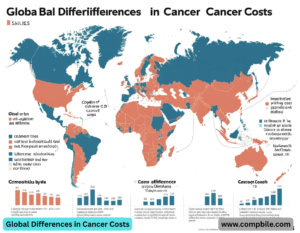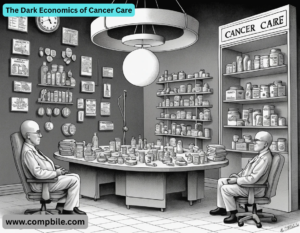Out of pocket cancer “Out-of-pocket cancer” likely refers to the direct costs that cancer patients and their families must pay for treatment, which are not covered by insurance or other financial assistance.
Common Out-of-Pocket Cancer Costs
- Deductibles & Co-pays – Payments required before insurance coverage kicks in.
- Chemotherapy & Medications – Some drugs (especially newer or targeted therapies) may not be fully covered.
- Hospital Stays & Surgeries – Costs for procedures, ICU stays, or specialist fees.
- Radiation Therapy – Depending on the type and duration.
- Diagnostic Tests – MRIs, CT scans, biopsies, and lab work.
- Travel & Lodging – For treatment at distant medical centers.
- Home Care & Medical Supplies – Nursing care, oxygen, mobility aids, etc.
Financial Burden of Cancer
- Many patients face “financial toxicity”—struggling with debt, bankruptcy, or delaying treatment due to costs.
Ways to Reduce Costs:
- Negotiate bills with hospitals or payment plans.
- Seek patient assistance programs (e.g., CancerCare, PAN Foundation).
- Check clinical trials (some cover treatment costs).
- Use nonprofit organizations for travel or lodging aid
- Review insurance for max out-of-pocket limits and appeal denied claims.
Why Are Cancer Costs So High
- Newer Treatments (immunotherapy, CAR-T cell therapy, precision medicine) can cost $100,000+ per year, and insurance may only partially cover them.
- “Out-of-Network” Surprises (e.g., an anesthesiologist at an in-network hospital might not be covered).
- Long-Term Care (physical therapy, mental health support, survivorship programs) often isn’t fully reimbursed.
Hidden Out-of-Pocket Expenses
- Beyond medical bills, patients often overlook:
- Childcare/Dependent Care (during treatment or hospital stays).
- Dietary Changes (organic/specialty foods, supplements).
- Home Modifications (ramps, bathroom safety bars).
- Alternative Therapies (acupuncture, massage, which some use for pain relief).
- Legal Costs (updating wills, disability paperwork).
Financial Toxicity: Real-World Consequences
- Medical Debt: 1 in 3 cancer survivors go into debt; 1 in 5 deplete savings (American Cancer Society).
- Treatment Delays: 25% of patients skip doses or delay care due to cost (Journal of Clinical Oncology).
How to Fight Back: Cost-Cutting Strategies
Insurance Hacks
- Maximize Your Policy: Know your annual out-of-pocket maximum (e.g., $9,100 for ACA plans in 2024).
- Appeal Denied Claims: 40-60% of appeals succeed (Kaiser Family Foundation).
- Use COBRA or ACA Special Enrollment if losing job-based coverage.
Drug Cost Savings
- GoodRx or Mark Cuban’s Cost Plus Drugs for cheaper generics.
- Pharma Assistance Programs: Pfizer RxPathways, Merck Helps.
- 340B Hospitals (nonprofits that offer discounted meds).
Nonprofit & Government Help
- PAN Foundation: Covers co-pays for specific cancers.
- CancerCare: Grants for transportation/housing.
Lifestyle Adjustments
- Second Opinions: Could reveal cheaper, equally effective treatments.
- Telemedicine: Cuts travel costs for follow-ups.
- Community Support: Local charities often help with groceries/utilities.
Key Questions to Ask Your Care Team
- “Is this test/treatment necessary, or are there lower-cost alternatives?”
- “Do you have a financial navigator or social worker to help me?”
- “Are there clinical trials covering treatment costs?”
Global Differences in Cancer Costs
United States:
- Most expensive system—no universal healthcare; even insured patients pay 5-20% coinsurance on chemo/radiation (e.g., 20% of a $100K drug = $20,000 out-of-pocket).
- “Balance billing” (surprise charges from out-of-network providers) is now illegal under the No Surprises Act (2022), but loopholes exist.
UK/Canada/Australia:
- Free/subsidized treatment via public healthcare, but may face:
- Limited access to newest drugs (e.g., NHS England often delays approving expensive immunotherapies).
India/Mexico/Medical Tourism:
- Self-pay patients flock here for cheaper care (e.g., a $250K U.S. surgery might cost $30K in India), but risks include:
- Variable quality (research JCI-accredited hospitals).
- No legal recourse for malpractice.
Legal Tactics to Reduce Bills
A. Medical Bankruptcy vs. Negotiation
- Demand itemized bills (errors occur in ~80% of hospital bills per Medical Billing Advocates of America).
B. Insurance Law Leverage
- ERISA Appeals (U.S.): If insured via an employer, federal law lets you sue insurers for wrongful denials.
- State High-Risk Pools: For the uninsurable (e.g., California’s MRMIP).
Psychological & Career Costs
- “Financial PTSD”: 55% of cancer survivors report severe anxiety about money (Cancer Support Community).
Workplace Discrimination:
- FMLA (U.S.) protects 12 weeks unpaid leave, but many can’t afford it.
- Disability Claims: 60% of initial applications are denied; hiring a lawyer doubles approval chances.
Extreme Cost-Cutting Strategies
Treatment Hacks
- Dose Splitting: Some IV drugs (e.g., Keytruda) allow shared vials between patients, cutting costs.
- Overseas Clinical Trials: Germany/Switzerland often cover travel + treatment for experimental therapies.
DIY Fundraising
- “Medical GoFundMe” Success: Campaigns average $10K-$50K, but only 12% hit goals. Pro tips:
- Post 3x/week on social media.
- Partner with local news for stories.
Gray-Market Drugs
- Out of pocket cancer Buying from Canada/India: Illegal but common (e.g., Gleevec costs $2,500/month in U.S. vs. $200 abroad). Risks include counterfeit meds.
Survivorship: The Long-Term Money Drain
- “Scanxiety” Costs: Annual MRIs/PET scans (up to $5K each) for recurrence monitoring.
- Life Insurance: Post-cancer, premiums skyrocket—group policies (via employers) may be the only option.
The Hard Truth
- “Poverty vs. Survival” Trade-Off: Some patients refuse proton therapy ($150K) or genetic testing ($3K-$5K) due to cost, even if clinically beneficial.
- Best Defense: A “financial triage” team—oncologist, social worker, bankruptcy attorney, and patient advocate.
The Dark Economics of Cancer Care
The “Chemo Con”
- Hospital Markups: A single Tylenol pill can cost $50 in oncology wards. Chemo drugs are routinely priced 300-500% above wholesale.
- “Buy-and-Bill” Scam: U.S. oncologists profit by purchasing drugs at wholesale prices, then billing insurers at inflated rates—creating perverse incentives to prescribe costlier treatments.
The Clinical Trial Bait-and-Switch
- “Free Treatment” Myth: While trials cover experimental drugs, patients often pay for:
- “Standard of care” costs (e.g., scans/labs comparing new drug to old regimen).
- “Research fees” hidden in bills (up to $15,000 for trial administration).
Guerrilla Cost-Avoidance Tactics
The “Medical Billing Audit” Hack
- Out of pocket cancer Demand CPT Codes: Force hospitals to justify every charge using billing codes, then:
- Challenge “upcoding” (e.g., billing a complex visit as 99215 when it was basic).
The “Insurance Jiu-Jitsu” Move
- Trigger “Catastrophic Coverage” Early:
- Front-load scans/tests at year-start to hit your out-of-pocket max (e.g., $9,100).
- Later treatments become 100% covered—saving tens of thousands.
The “Gray Market” Survival Guide
- International Pharmacy Playbook:
- Canada: Legally import 90-day supplies via CIPA-certified pharmacies.
- Turkey/India: Purchase biologic drugs (e.g., Rituxan) for 1/10th U.S. price with a doctor’s script.
Nuclear Options When Funds Run Out
The “Charity Care” Loophole
- Nonprofit Hospitals MUST Help: By law (ACA Section 501(r)), they must offer financial aid—but 90% hide the option. Demand their “FAP” (Financial Assistance Policy) in writing.
- Income Gimmicks: If near the poverty line (e.g., $30K/year), contribute to a 401(k) to lower “adjusted gross income” and qualify for Medicaid.
The “Divorce to Survive” Strategy
- In 19 U.S. states, couples facing medical bankruptcy legally divorce to:
- Make one spouse Medicaid-eligible (asset limits: $2K individual vs. $3K couple).
- Protect family assets from creditors.
Get article on pdf file…..Click now
……..Out of pocket cancer……





